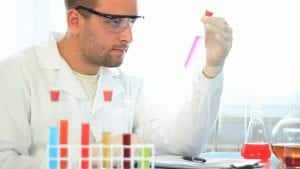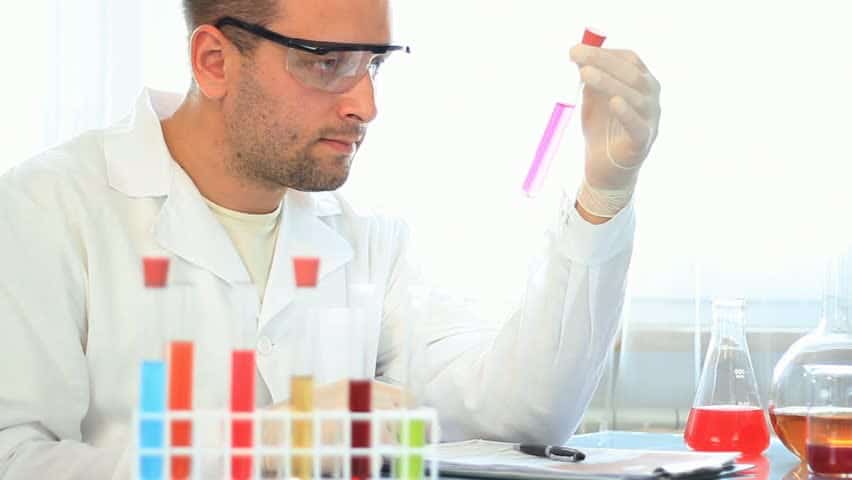Addiction Medicine: Heroin. Cocaine. Meth. Nicotine. These drugs have more in common than you may know. Yes, they’re all dangerous, all addictive, and all far too prevalent in American society. But did you know they all basically work the same way? Someone who did know that, and acted on it, is Nicholas Cosford, a professor with the Sanford Burnham Prebys Medical Discovery Institute in San Diego. Cosford has come up with a compound that could possibly end addiction to all of the above-named substances. This makes sense, because in addition to being a professor, Cosford is the co-founder and head of Drug Discovery at Camino Pharma. He recently received a $10.8 million grant from the National Institute on Drug Abuse, (NIDA), because it seems to be working. His idea is not original, just a tweak on a previously-established school of thought. Still, this brilliant professor from beautiful San Diego, California might have just cured drug addiction. We will explain how, but first let’s discuss how addiction workbiologically, and what the previous ideas for ending addiction were. 
Glutamate + Dopamine = Addiction
Put extremely basically, for this writer is no scientist, here is how shooting heroin, sniffing coke, smoking meth, and even smoking a cigarette, are all essentially doing the same thing to your brain. There are receptors all over the brain, which are tiny portals for neurotransmitters to go through. A neurotransmitter is what you may remember from high school as being called ‘a messenger.’ There are several different neurotransmitters, and they call carry different messages. The two most important in drug use are glutamate and dopamine. Glutamate is known as an excitatory neurotransmitter because it stimulates the brain. At normal levels, it’s responsible for learning and memory in humans. It’s actually the most prevalent excitatory neurotransmitter in the whole nervous system. Dopamine is the neurotransmitter responsible for the pleasure we feel when we engage in reward-motivated behavior. For example, it feels good to eat a candy bar, right? Have you ever wondered why? It’s because the sweetness of the candy is releasing dopamine into your brain’s receptors, causing you to feel joy from the behavior you engaged in – snacking on a Snickers. Here’s where it gets tricky. When someone does a drug, say something strong like heroin, the brain gets absolutely flooded with dopamine and it feels good – it’s what we call a high or a buzz. At the same time, glutamate is also being produced at abnormally high levels. This causes the brain to basically remember how good the drug use felt, store that information, and then cause a desire for that drug again whenever a memory of using it is recalled. OK that might be a lot of words. Here’s the true layman version: Doing drugs causes the brain to make the body feel really good, but it also causes the body to want to feel that same pleasure whenever drugs are around or thought of. This is why addicts have cravings, and this explains triggers, or things that cause cravings. Here’s an example. Say Peter used heroin for years with his best friend Alice, but he quit last month. Chances are that every time he sees Alice, or even a picture of her, that his brain is going to associate her with the memory of feeling good (glutamate), and if he does use heroin again, the pleasure will return (dopamine) and again be remembered as a rewarding behavior (glutamate again). It’s called addiction, and it’s a vicious cycle. The physical way to kill addiction is to simply not use the drug. This is nearly impossible for an addict. The physiological way to kill addiction is to enter into a treatment facility and take advantage of the medical professionalism. The psychological way to kill addiction is to attend therapy. Biology is concerned only with the actual body and brain.
Blocking Dopamine? Too dangerous.
In the past, the biological answer to addiction has been to block the dopamine receptors. The brain can release all the dopamine it wants, but if that dopamine is not received, no high, right? And if there’s no high, then why do the drug at all? Voila – addiction over. That may seem good and dandy, but blocking dopamine receptors can cause some seriously horrible side effects. After all, it is a naturally occurring neurotransmitter that when at healthy levels is essential in our day-to-day function as people. Here are just some of the possible side effects of using a dopamine antagonist, a drug that blocks dopamine receptors:
- Tardive dyskinesia (involuntary body movements)
- Impotence and/or loss of libido in men
- Menstrual dysfunction in women
- Galactorrhea (spontaneous milk-flow from breasts) in both sexes
- Parkinsonism
- Irregular heartbeat
In the more recent past, it has been discussed to block glutamate receptors. This way, the learning and the memory associated with drug use is tampered down and possibly could prevent compulsive drug use and ultimately addiction. In fact, in 2015, a study was published in the journal Frontiers in Neuroscience that specifically dealt with glutamate and drug addiction. The findings serve as the perfect precursor to the current work of Nicholas Cosford.
Blocking Glutamate? A 2015 Study.
When it comes to the brain, there are two types of reward: natural and drug. A natural reward is critical to our lives, something such as how we feel when we drink water when thirsty. A drug reward is not critical, and is only “…consumed for [its] ability to produce pleasure and euphoria.” The idea of the study was to explore three things in general: the effects that glutamate has on drug reward, the then-current status of using glutamate antagonists to combat drug addiction, and, in their words, to “…discuss future studies needed to address currently unanswered gaps in knowledge, which will further elucidate the role of glutamate in the rewarding effects of drugs of abuse.” In short, they reinforced the knowledge that glutamate plays a crucial role in drug addiction. They also warned of how dangerous blocking glutamate receptors can be. “Significantly, blockade of glutamate transmission… attenuates the rewarding effects of drugs of abuse. Further, blocking glutamate transmission in brain regions associated with reward… likewise attenuates drug reward.” Translation Into Layman’s Terms: The author of the study is saying that blocking glutamate receptors not only decreases the actual amount of pleasure (dopamine), but that it also reduces the tendency of the brain to remember and learn that drug abuse is rewarding. So, where dopamine blocking only reduces pleasure, glutamate blocking reduces both pleasure and desire. What could go wrong? This next section, a bit of a longer quote directly from the study, explains what could go wrong. Don’t worry; there will be another translation! “The ubiquitous distribution of glutamate makes targeting glutamate transmission to decrease the reinforcing effects of drug rewards very challenging. Further, it must be emphasized here that glutamate transmission is involved in many other physiological functions such as learning, memory, regulation of normal behavior and reinforcing effects of natural rewards. Hence, there is a need to develop medications that selectively attenuate the reinforcing effects of drugs of abuse without affecting other physiological functions.” Translation Into Layman’s Terms: Because there is just so much glutamate produced by the body, and for so many different functions, simply blocking its receptors would cause some serious problems. These problems could include complications in essential functions such as learning and/or ‘regulation of normal behavior,’ which frankly is terrifying. Therefore, it’s a must that some kind of medication or compound be made that only blocks those glutamate receptors associated with ‘the reinforcing effects of drugs of abuse’. These words were published only two years ago. Professor Nicholas Cosford may very well have found that compound – one that blocks all the right receptors, and doesn’t affect those that help us live normally.
Professor Cosford and the SBP Compound
“Our institute is very good at doing basic biology,” said Cosford to the San Diego Tribune, linked above. He was not lying. He and his partners recently developed a compound called SBP-0069330. According to the wordage of the SD Tribune, it “…regulates certain receptors on brain cells for the neurotransmitter glutamate.” What the compound actually scientifically does is “…target the metabotropic glutamate receptor 2 (mGlu2),” according to Cosford. Again, using layman’s terms, the compound manages to focus on blocking those glutamate receptors most associated with addiction to heroin, cocaine, methamphetamines, and nicotine. SBP-0069330 has even been proven successful in rats, creatures which believe it or not are over 90% identical genetically to human beings. (This is why they’ve been used in such experiments for such a long time). The ultimate goal is obviously testing the compound on people. Before that happens, a lot of work needs to be done. Toxicity tests have to be performed. Much more volume has to be created. These are just two of many things that need to be accomplished before it’s tested on humans. That’s where a nice and handy $10.8 million from NIDA comes into play.
The Grant
Three more years of preclinical work: that is what the grant is funding. Toxicity tests and volume increases and all of the other extremely important work that needs to be done before this compound enters a human being will hopefully be paid for by this grant. Obviously multimillion dollar grants are not tossed around on a regular basis, so NIDA, one of if not the leading institute on substance abuse, truly believes in Cosford’s compound. An ulterior motive of the grant being given was also to quicken the process of getting the compound from research-level to an actual product, able to marketed. Cosford said to the SD Tribune that they have “…the ability to do very early-stage drug discovery that gets to the in vivo proof of concept stage.” (This means the tests on rats were successful and proved that the compound works in live animals). “What we don’t have is the ability to move things from the in vivo concept into the clinic.” Nearly eleven million big ones ought to be a great start, which is wonderful news. Consider the implications of a drug that actually cures heroin addiction, cocaine addiction, meth addiction, and even cigarette addiction, which is the single largest preventable killer worldwide. It’s almost a shame that three more years are needed, but it’s definitely better to be safe than sorry when it comes to medicine.
In Conclusion
The process is not over yet, and surely something could go wrong and compound SBP-0069330 might be canned for all time. Or, after three years, the compound might be perfected into a medicine and then made available to the public. Whichever drug company decides to endorse the end product will be delivering a significant punch in the battle against the drug epidemic that’s all but swept our nation. It definitely helps that Professor Cosford is also the head of a pharmaceutical company. However, they are a start-up at this point, and they focus more on cancer therapies. It’s likely a different pharma company would have to endorse, but it seems rather likely one will. In the conclusion of the Frontiers in Neuroscience study discussed earlier, it says that “…the FDA has approved several medications that attenuate glutamate transmission…” but that these medications are on route to become treatments for central nervous system disorders. While addiction may fall under that category, Cosford’s compound is apparently the first to be able to be able to target specific glutamate receptors associated with drug reward, and therefore with addiction. This is truly some exciting stuff.

